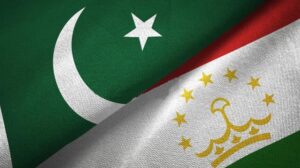Tajikistan Celebrates Ancient Harvest Festival of Mehrgon with Vibrant Festivities

Dushanbe, The Gulf Observer: Colorful celebrations of Mehrgon, an ancient festival marking the golden season of harvest, are in full swing across Tajikistan, with the main festivities taking place in the capital, Dushanbe. The event, steeped in centuries-old tradition, features folk concerts, artisan exhibitions, traditional games, and festive gatherings that bring together locals and visitors alike, according to media reports.
Rooted in Zoroastrian traditions, Mehrgon honors Mithra (Mihr) — the deity of the sun, light, friendship, and agreements. Historically celebrated in mid-autumn according to the ancient Persian calendar, the festival symbolizes the conclusion of agricultural work and a time of gratitude for prosperity and abundance.
Firdavsi Park, the focal point of Dushanbe’s celebrations, has been transformed into a vibrant venue adorned with pyramids of fruits and vegetables. A national fair showcases the best of the country’s harvests, displaying grains, produce, and handmade goods from farmers and artisans across Tajikistan.
The festive atmosphere is enriched by the sound of traditional instruments such as karnay, doira, and dutar, accompanying folk dances and songs that highlight the richness of Tajik culture. Visitors are welcomed with traditional dishes including sambusa, kurutob, and plov, as well as meals prepared with meat and mountain herbs.
Tables across the fair are laden with apples, grapes, pomegranates, wheat, honey, and nuts — all symbols of vitality, fertility, and abundance. The festival’s signature colors, purple and orange, reflect the warmth of the autumn sun and the maturity of the harvest season.
During Mehrgon, people don new clothes, share festive meals, and exchange gifts, embodying the festival’s core values of friendship (Mehr) and love.
Revived in 2009 under the initiative of President Emomali Rahmon, Mehrgon was officially inscribed on Tajikistan’s list of intangible cultural heritage in 2017, reaffirming its importance as a cherished symbol of national identity and cultural continuity.


